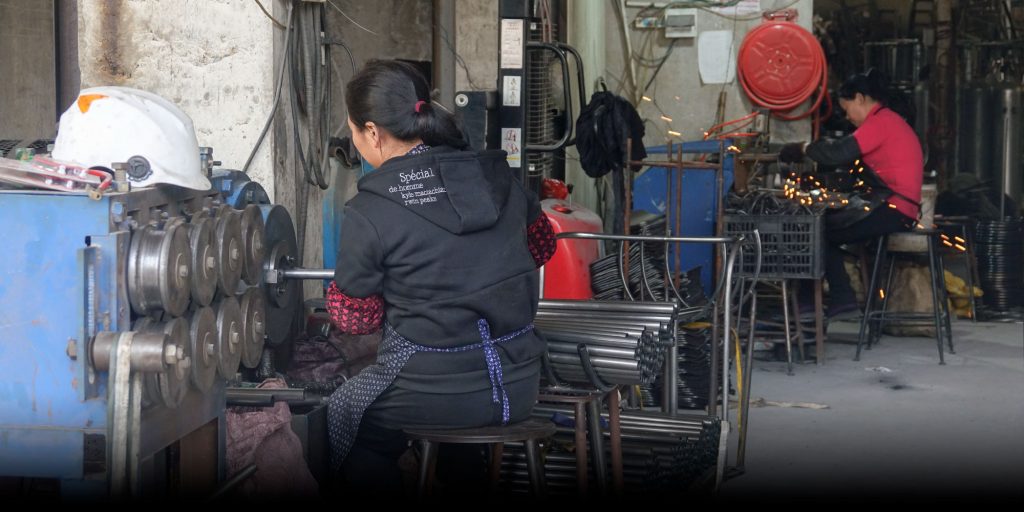As live-streaming disrupts China’s e-commerce landscape, gaps between urban and rural sellers may be getting wider.

Liao Hancheng owes his career to Taobao. Like many of his neighbors in Shangqing Township in Fujian province, he was an early adopter of the vast e-commerce marketplace, building a business that sells furniture and small decorative objects on the app and other Chinese e-commerce marketplaces.
Liao’s workshop occupies the ground floor of a converted house, with roll-up doors facing the street. It looks a lot like a two-car garage. Walk down the main street of the village, and you’ll see dozens of workshops like his making fold-up chairs, dining tables, and bookshelves.
E-commerce made it easy for small manufacturers like Liao to sell directly to consumers, creating a wave of rural industry. “Taobao villages” like Shangqing have been touted as models of successful rural development. Taobao villages located in impoverished counties generated almost 5 billion yuan ($786 million) in sales in 2020, according to parent company Alibaba.
So it was a surprise to find Liao on a late January afternoon doing some very non-digital business: working the phones, trying to line up a few wholesale orders from established customers before the New Year. He’s been forced to fall back on traditional business channels in recent years, he says, as his sales decline on Taobao.
When you ask merchants in Shangqing about business, the conversation quickly turns to the impact of livestreaming. Since the pandemic, entertainment-slash-advertising video streamers have come to dominate digital marketing in China. These online influencers combine entertainment and advertising. The most famous streamers, like Viya and “lipstick king” Li Jiaqi, operate via a QVC-style hard sell model. They offer viewers steep discounts on a rotating cast of products, charging brands huge fees to be featured, as well as a performance. Continue to read the full article here
– This article originally appeared on Sixth Tone.





